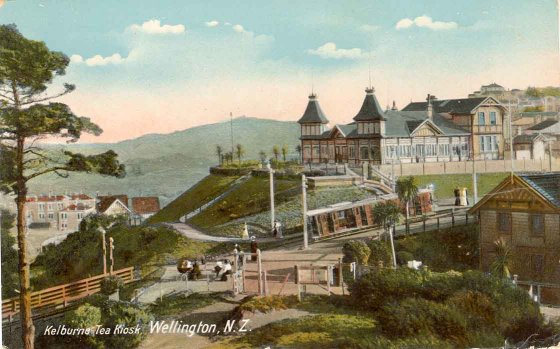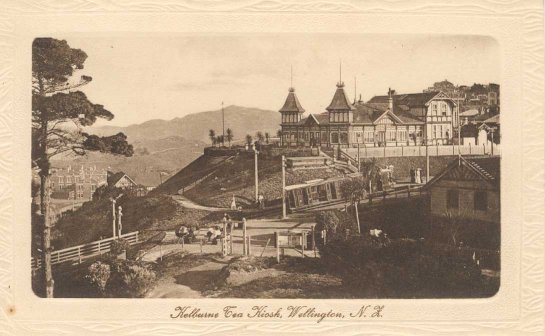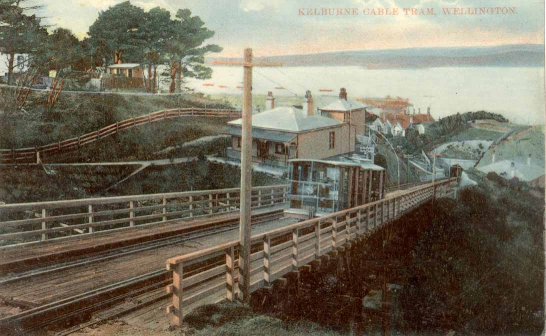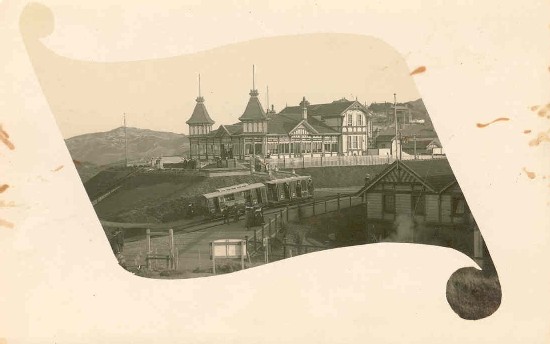This week we take time to remember the 4 year anniversary of the 2011 Christchurch earthquake. We also highlight two other events that occurred this week in history dating back to 1902 when the Wellington Cable Car opened for business. This week’s selected topics come from the Today in History page at nzhistory.net.nz. On display in the New Zealand Reference Collection are books that can provide more information on the events featured in ‘This Week in History’.
From 2011: The Christchurch Earthquake
On Tuesday 22 February 2011 at 12.51 p.m. Christchurch was shaken by a magnitude 6.3 earthquake. 185 people were killed and hundreds injured. The earthquake was centered near Lyttelton and just 10 km away from Christchurch’s central business district. Many books have since been published about the earthquake, the damage and the human response.
 Christchurch 22.2 : beyond the cordon / through the eyes of the New Zealand Police photographers.
Christchurch 22.2 : beyond the cordon / through the eyes of the New Zealand Police photographers.
“At 12:51pm on Tuesday, 22 February 2011 a 6.3 magnitude earthquake shook Christchurch. It proved to be one of the worst natural disasters New Zealand has ever experienced. The earthquake devastated central Christchurch and many suburbs. A national State of Emergency was declared and the Christchurch Police immediately began Operation Earthquake. Police Forensic photographers began the grim task of documenting the disaster and its effects. This book is a collection of 256 of their photographs.” (Abridged from inside cover)
 Earthquake : Christchurch, New Zealand, 22 February 2011 / text by Chris Moore and Press Journalists ; images by Press and Fairfax photographers ; picture research by Jude Tewnion.
Earthquake : Christchurch, New Zealand, 22 February 2011 / text by Chris Moore and Press Journalists ; images by Press and Fairfax photographers ; picture research by Jude Tewnion.
“This book tracks the immediate effects of the quake and its aftermath as well as looking at the science behind the quakes.” (Abridged from back cover)
From 1951: Troops were deployed in the 1951 waterfront dispute
The waterfront dispute of 1951 was the biggest industrial confrontation in New Zealand’s history. It went on for five months, from 15 February to 15 July. Sid Holland’s National government declared a state of emergency on 21 February. On the 27th, troops were sent onto the Auckland and Wellington wharves to load and unload ships.
History students can come and search the database of “Evening Post” newspaper clipping files we hold to search for primary sources for assignments or can refer to books such as the following about the waterfront dispute.
 The big blue : snapshots of the 1951 waterfront lockout / edited by David Grant.
The big blue : snapshots of the 1951 waterfront lockout / edited by David Grant.
“In working-class parlance a ‘blue’ was the colloquial term for an industrial disruption – a strike or a lockout. The 1951 waterfront lockout was, up until that time, the biggest ‘blue’ of them all and still holds attention today as a seminal event in New Zealand’s industrial and political history.” (Abridged from back cover)
Never a white flag : the memoirs of Jock Barnes / edited by Tom Bramble.
“Jock Barnes’ name was once known by everyone in New Zealand as the leader of the Waterside Workers’ Union. His memoirs cover the period from 1935 to the 1951 lockout of watersiders and the destruction of the Union. He writes of the events of those times, and the personalities he knew. Illustrated with historical photographs; includes an introduction by the editor, Tom Bramble.” (Syndetics summary)
From 1902: Wellington’s Kelburn Cable Car Opens
Wellingtonians were eager to try out the new cable car that connected Lambton Quay and Kelburn when it was opened in February 1902. Its development opened up the Kelburn area for housing and is a popular Wellington tourist attraction. As well as books we have some old postcards featuring the Kelburn Cable Car from the Postcard Collection.
 Hold very tight please! : the cable cars of New Zealand / Don McAra.
Hold very tight please! : the cable cars of New Zealand / Don McAra.
“In beautifully detailed and meticulously researched paintings. and a delightfully nostalgic text, artist Don McAra brings alive New Zealand’s original cable cars and the post-Second World War world they inhabited. In Wellington the Kelburn cable car was, and still is, integral to city life.” (inside cover)
The Kelburn cable car : Wellington – New Zealand / Graham Stewart
“Like San Francisco, the Wellington Cable Car climbs right up to the sky, from under the city high rise buildings through tunnels and over viaducts to the residential suburb of Kelburn.” (inside cover)

Kelburne Tea Kiosk, Wellington, N.Z. [postcard].
Hand-tinted photograph of the Kelburn (then Kelburne) Kiosk on Upland Road, with a cable car, passengers, and Karori hills in the background.

Kelburne Tea Kiosk, Wellington, N.Z. [postcard].
Photograph of the Kelburn (then Kelburne) Kiosk on Upland Road, with a cable car, passengers, and Karori hills in the background.

Kelburne Cable Tram, Wellington [postcard].
Shows a cable car climbing up to Kelburn (then Kelburne), with the harbour in the background.

[Kelburn Kiosk and cable car] [postcard].
Photograph (in scroll shape) of the Kelburn Kiosk on Upland Road, with a cable car, passengers, and Karori hills in the background.




